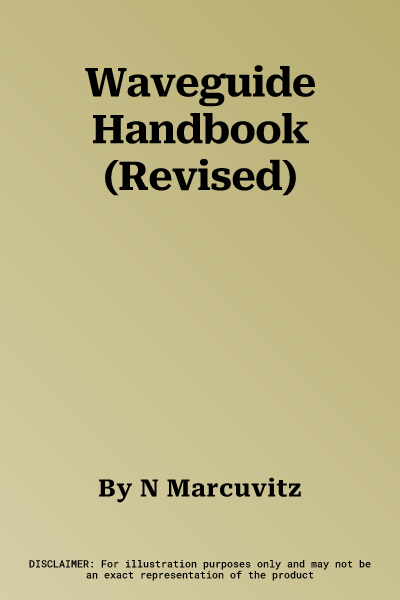The Waveguide Handbook is an unabridged reprint of the book first
published in 1951 by McGraw Hill as Volume 10 of the MIT Radiation
Laboratory Series.
Although the primary aim of the book is to present the
equivalent-circuit parameters for a large number of microwave
structures, a brief but coherent account of the fundamental concepts
necessary for their proper utilisation is included. The first three
chapters summarise both the field and network theoretic considerations
necessary for the derivation and utilisation of the basic transmission
line-equivalent-circuit formalism. The mode concept and
transmission-line formulation of the field equations are introduced in
Chapter 1. This chapter contains an engineering treatment of the
transmission-line theory necessary for the description of propagating
and nonpropagating modes in the more important types of uniform and
nonuniform waveguides. The field-structure, propagation, attenuation,
etc., characteristics of the transmission-line modes so described are
compiled in Chapter 2, with both quantitive and pictorial detail. The
elements of microwave-network theory required for the analysis,
representation, and measurement of the equivalent circuits for
N-terminal microwave structures are outlined in Chapter 3; also
contained in this chapter is a sketch of some of the field theoretic
methods employed in the derivation of the equivalent-circuit parameters
reported in Chapters 4 to 8. Although most of the above material is
written for the impedance-minded microwave engineer, some of the
sections should be of interest to the applied mathematician. The
remaining chapters contain a compilation of the equivalent-circuit
parameters for a variety of nondissipative N-terminal microwave
structures. In Chapter 4 a number of two-terminal structures, such as
beyondcutoff and radiative waveguide terminations, are treated. Obstacle
and aperture discontinuities in waveguides, gratings in free space,
etc., are among the four-terminal structures described in Chapter 5.
Chapter 6 deals with six-terminal microwave structures and contains the
equivalent-circuit parameters for a number of E-and H -plane T- and
Y-junctions, bifurcations, etc. Several eight-terminal structures are
treated in Chapter 7. Chapter 8 contains the circuit description of a
number of typical composite microwave structures; dielectric-filled
guides, thick apertures, etc.
This edition also contains a new preface by the editor and several pages
of errata which he has collected over the past thirty-five years.

